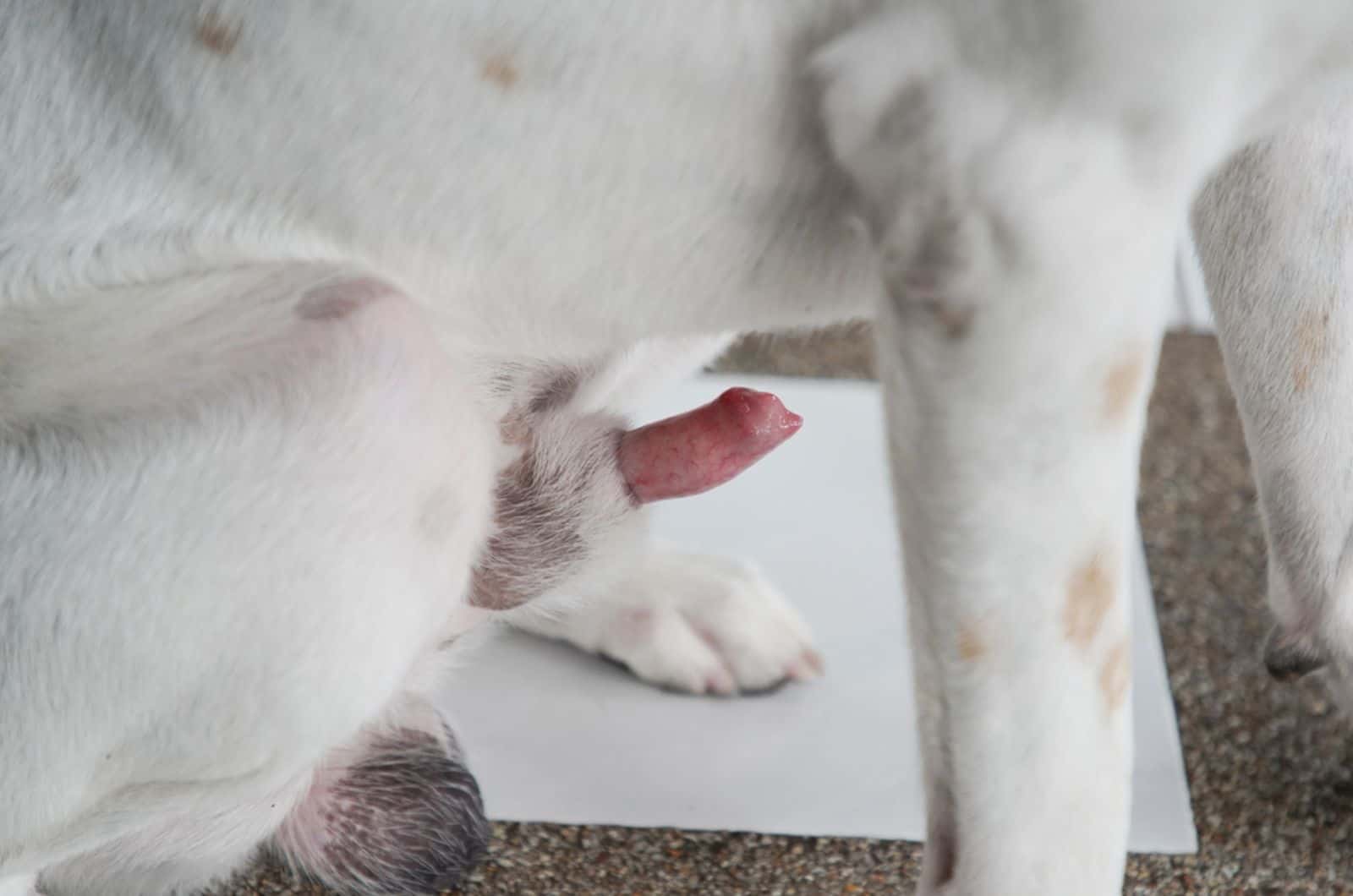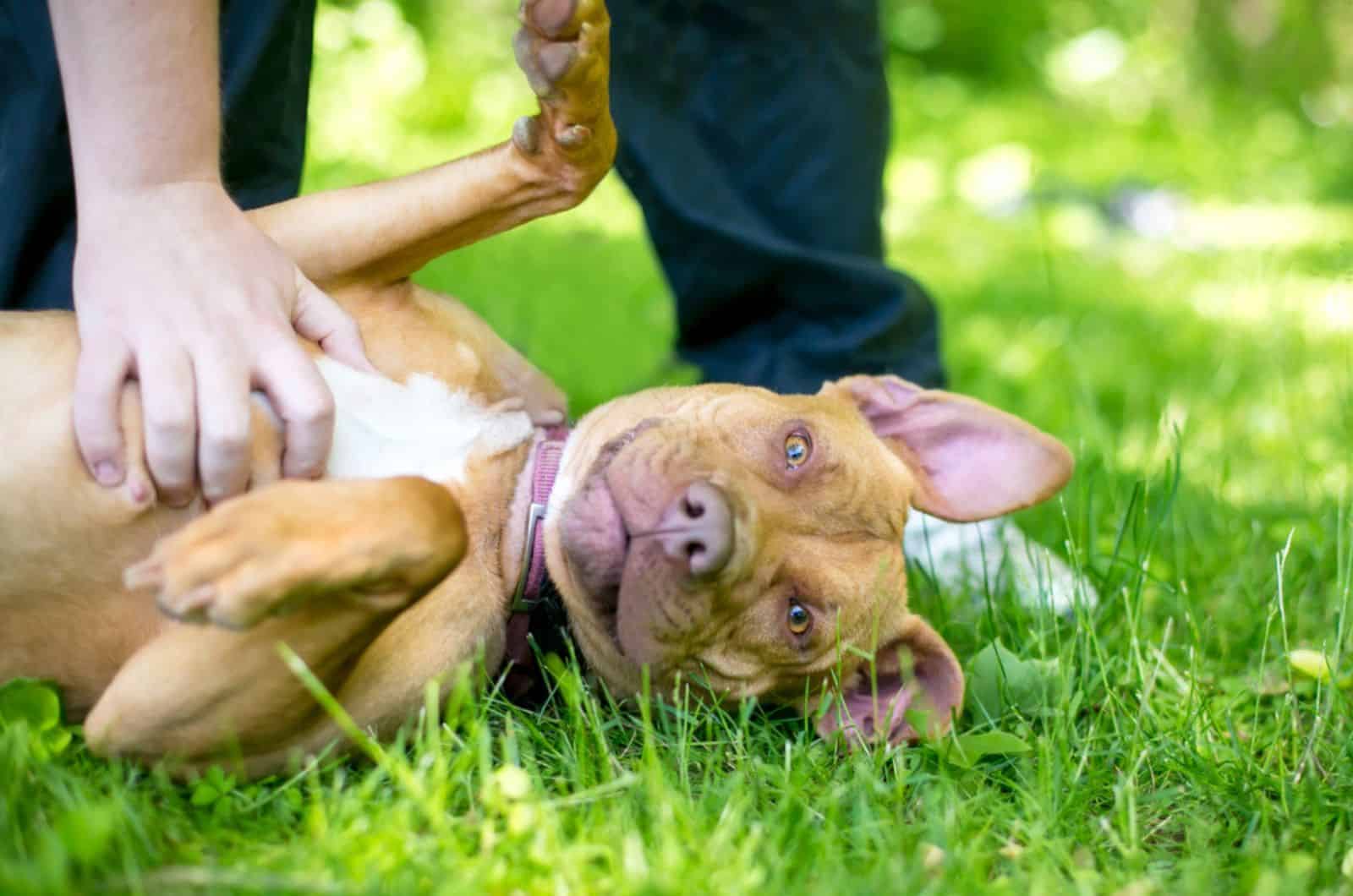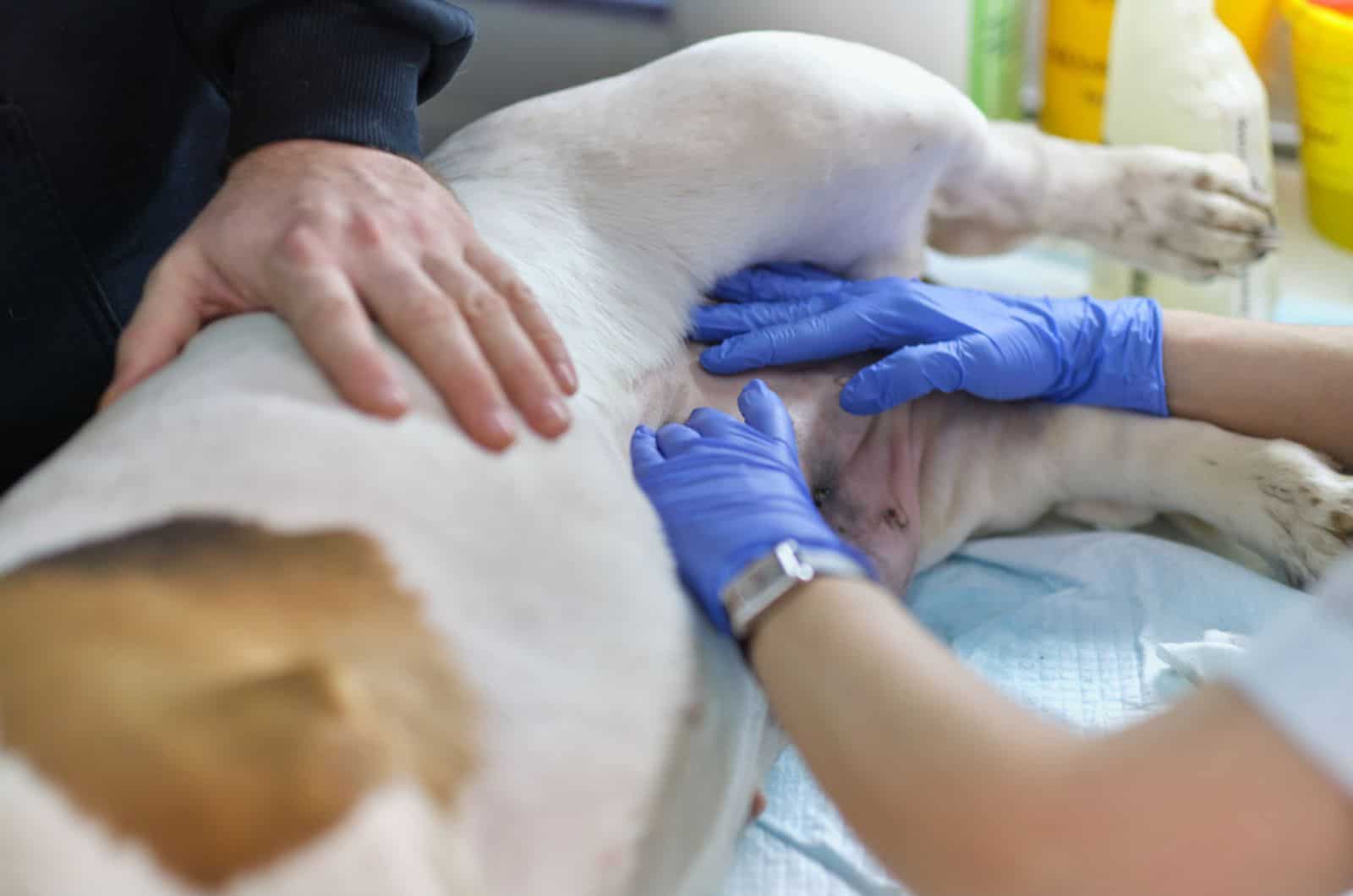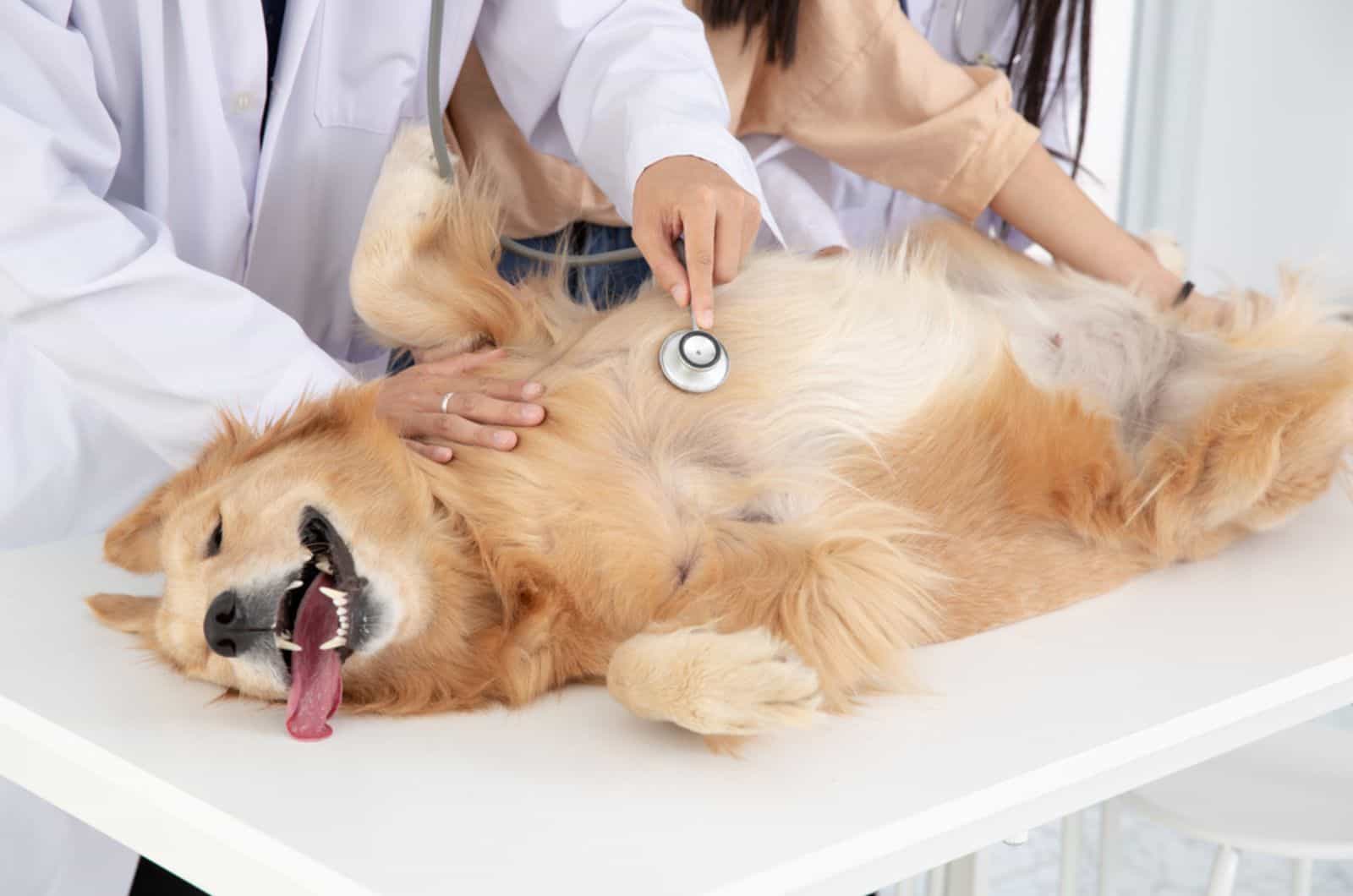Having a dog as a pet means being prepared to face all possible health issues or conditions that might occur during your dog’s life.
It goes without saying that this is a must for owning any kind of pet, not just a dog. But, we are talking about a certain dog’s health issue that can occur during adulthood. And, it strictly involves male dogs.
We are talking about paraphimosis in dogs. Para-what?
Well, it is a condition that happens to male dogs only, and it has to do with their private parts. If you’ve ever had a dog with paraphimosis, you might have thought it was quite an embarrassment. But, how do you know it was paraphimosis?
And, if it is paraphimosis, it is time to leave the embarrassment behind and do something about it because soon, your doggo won’t feel good anymore.
Don’t worry – it is not an it’s-a-matter-of-seconds kind of emergency, but it does require you to take your Fido to the nearest vet clinic as soon as possible.
We will talk about when to take your dog to the DVM (doctor of veterinary medicine) and when it’s just an “oh, there he goes again, dog lipstick is out and about” — or a red rocket? I’ve heard owners using various names when referring to their dog’s penis.
Whatever you choose to call it, let’s talk about what it is, why it happens, and what to do when it does happen?
What Is Paraphimosis In Dogs?

This health condition refers to the dog’s inability to retract the penis back into the foreskin-like sheath. When a dog is not excited, the actual penis location is inside the prepuce (sheath) and, as such, the penis is safe from getting injured by external factors.
Penile retraction inability is not that common, and it accounts for around seven percent of all penile problems in dogs. However, if left untreated, this can turn into a serious condition.
You will certainly notice your dog is behaving differently. Sometimes, you can even tell a dog’s in some kind of trouble by paying attention to its tail position. You can check out this chart: dog tail position chart, and find out what your doggo is telling you.
However, it might not be paraphimosis because paraphimosis in dogs can easily be mistaken for priapism and congenital anatomical abnormalities. There are other health issues regarding the dog’s reproductive organs that can happen at the same time as a penile problem.
For example, cryptorchidism and swelling of the bulbourethral gland. The first health issue involves the testicles, and the latter affects the secondary sex glands that are normally present on both sides of the urethra.
How Do You Make a Difference?
First of all, priapism is the inability to retract the erect penis back into the sheath. It can be referred to as a prolonged dog erection, and it can last for more than 3 hours. Priapism happens without sexual stimulation.
Generally speaking, we can say that priapism is a form of paraphimosis. However, priapism involves penile erection when there is no sexual stimulation present.
Congenital abnormalities refer to a variation in the dog’s male anatomy in which an exposed penis or glans of the penis occurs because of the inadequate length of the covering skin (sheath). Congenital means that a dog is born with this condition.
Also, don’t make a mistake in confusing phimosis with paraphimosis. Phimosis is the opposite of paraphimosis in dogs. This means that a dog cannot protrude the penis out of the sheath under any circumstance.
You can visit some of the veterinary websites to see pictures of paraphimosis in order to help you differentiate the mentioned issues.
Just have in mind that this is a health condition that can happen to both dogs and cats, which means you will find medical articles referring to both animal species.
Why Does Paraphimosis In Dogs Happen?

There are many reasons why paraphimosis occurs:
- After coitus (rarely)
- Post-manual semen collection
- Trauma
- Foreign objects
- Neoplasia
- Penile hematomas
- Neurological problems (neurological disease)
- Presence of hair around the base of the penis
- Preputial orifice inversion
- Weakness of preputial muscles
- Pseudohermaphroditism
Out of all these possible reasons for paraphimosis in dogs, post-manual semen collection is the most common one.
After that, foreign objects, and the presence of hair are also more common than the other mentioned reasons. Foreign objects and matted hair physically prevent the retraction of the penis back into the sheath.
Males that are not neutered are more prone to humping, which can also lead to paraphimosis. If you want to neuter your dog, but you are unsure when the right time is, you can follow this link for more information: 9 signs that a dog needs to be neutered.
What Can Happen If It’s Left Untreated?
Untreated paraphimosis in dogs can result in necrosis of the penis and bulbus glandis (glands located on both sides of the penis that swell during an erection and go back to normal after the ejaculation).
Necrosis happens because of the reduced, and ultimately, complete stop of blood flow to the penis. Necrosis literally means the death of the tissue. Without blood flow, there are no nutrients and oxygen, which leads to the death of the cells.
Cell death leads to tissue death, and finally to complete organ failure. Necrotic tissue needs to be removed. That means, the treatment option will be amputation of the penis and any other surrounding necrotic tissue.
Prior to necrosis, paraphimosis can lead to inflammation, not only of the glans of the penis and sheath, but of the surrounding tissue as well.
Read Next: 10 Reasons Why A Dog’s Balls Are Red & How You Can Help
What To Do

If possible, all pet owners would sign their dogs up for the “the dogs | pet health & wellness” program at least once a week to keep them as relaxed and happy as possible! We are all up for the best possible pet care we can give to our doggos.
So, it is understandable that you start to worry when paraphimosis happens. The embarrassment has passed, and now you start to think there is some underlying cause for this to happen.
And, yes… this can be a pet emergency. However, it is an emergency only if you leave it untreated for more than a couple of hours.
To sum it up:
- If paraphimosis lasts for more than 30 minutes — take your dog to a vet
- If you notice that your dog is in pain — take your dog to a vet (don’t wait an hour)
- If you notice abnormal swelling — take your dog to a vet
It is best not to try to treat paraphimosis in dogs on your own at home. You might unintentionally hurt your dog and cause more problems.
A veterinarian will do a retraction of the protruded penis safely, and in the shortest possible time. They can also add anti-inflammatory medications to prevent any infections or secondary complications from occurring.
The Conclusion
As a final thought, it is best to say that paraphimosis in dogs is an emergency. Because of various problems that can occur if left untreated, and because of the injuries that can happen from the very beginning, it is best to take your dog to the vet as soon as possible.
We recommend taking your dog if it lasts more than 30 minutes because it is better to be on the safe side and prevent any possible injury.
If your dog has a penile problem that prevents him from retracting his penis back into the sheath, it can lead to serious injuries and consequential secondary infections. That’s why it is best to act quickly, and not wait for a couple of hours to pass.
In most cases, paraphimosis does not occur often. However, if it happens more than once a month, the best option is to consult your vet about what can be done to prevent any further happenings.
Sometimes, neutering your dog can either solve the problem or lower the chances of it happening.
Whatever the reason is, the best option is to let a professional treat the problem, and not do it on your own.
Read Next: Tips And Tricks On How To Get Dogs Unstuck During Mating
